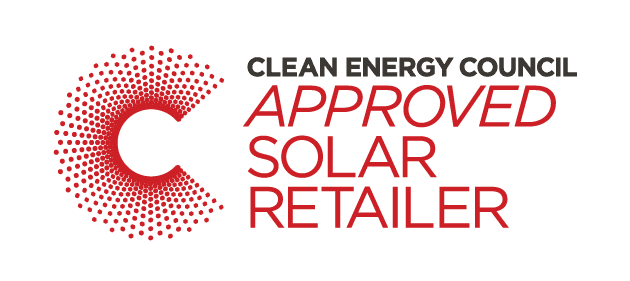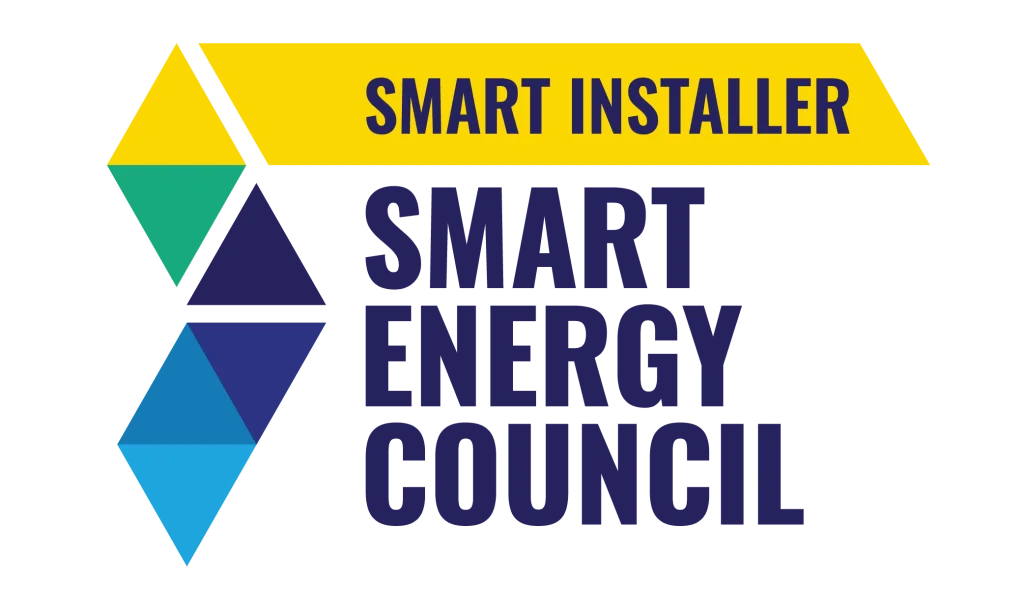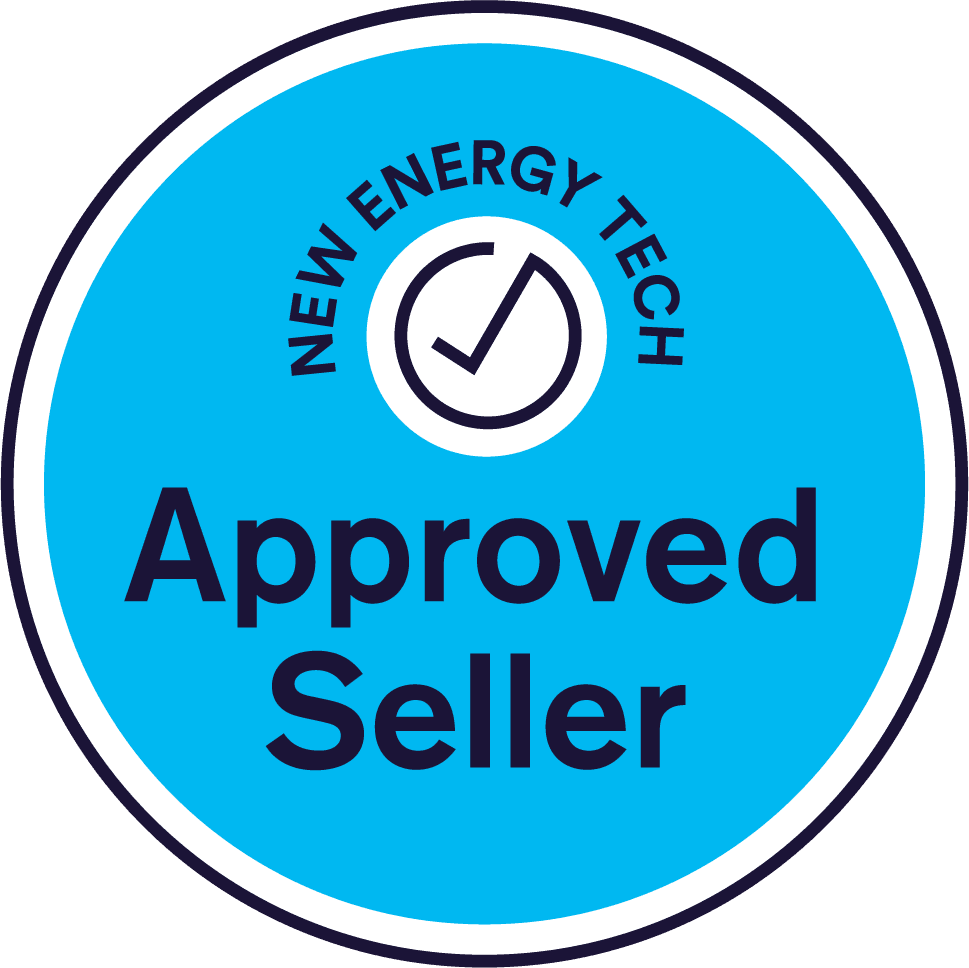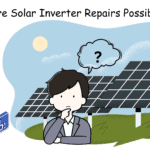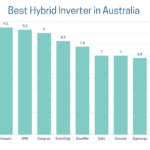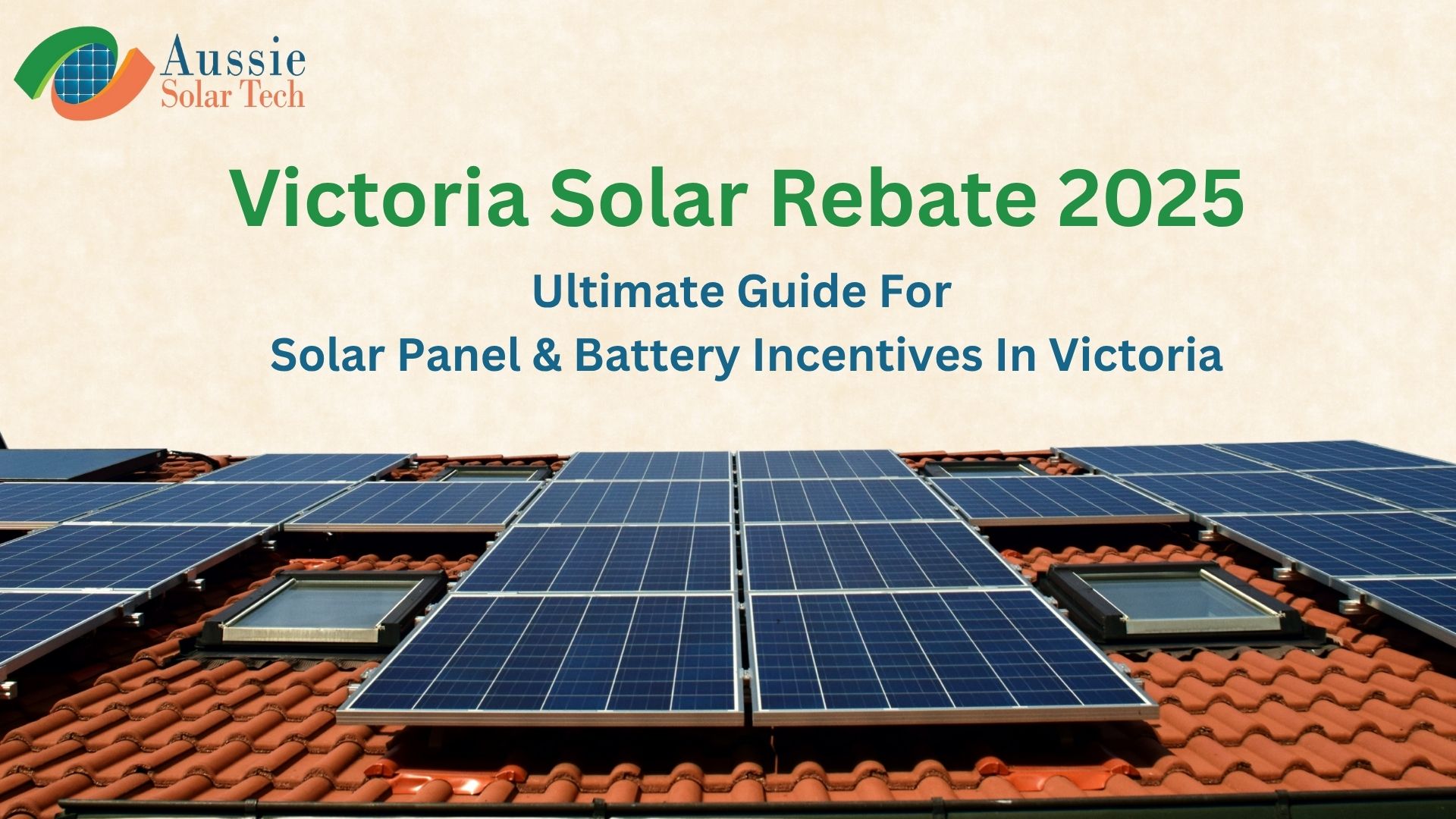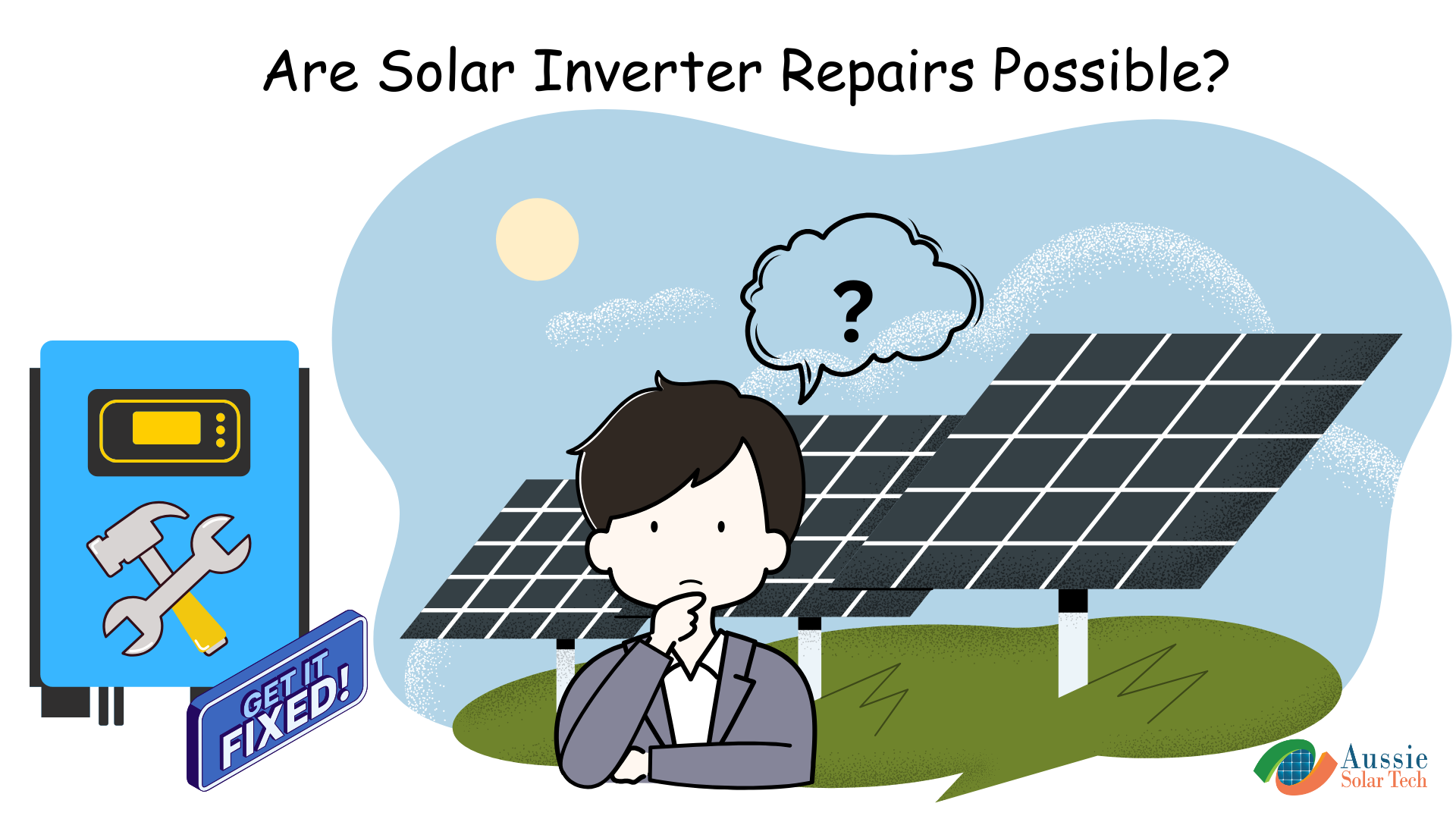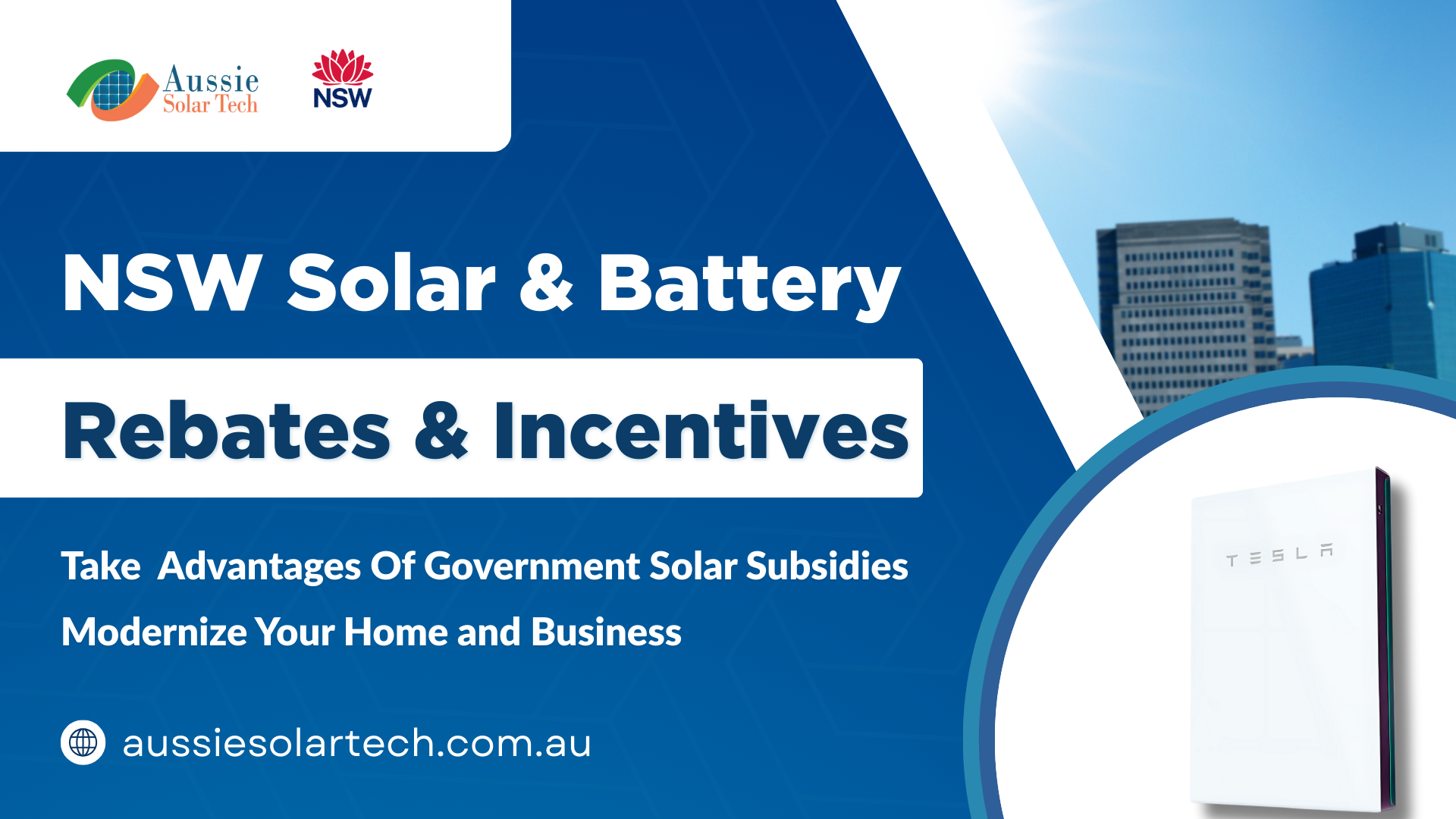Ultimate Guide to Small-Scale Technology Certificates (STCs) in Australia
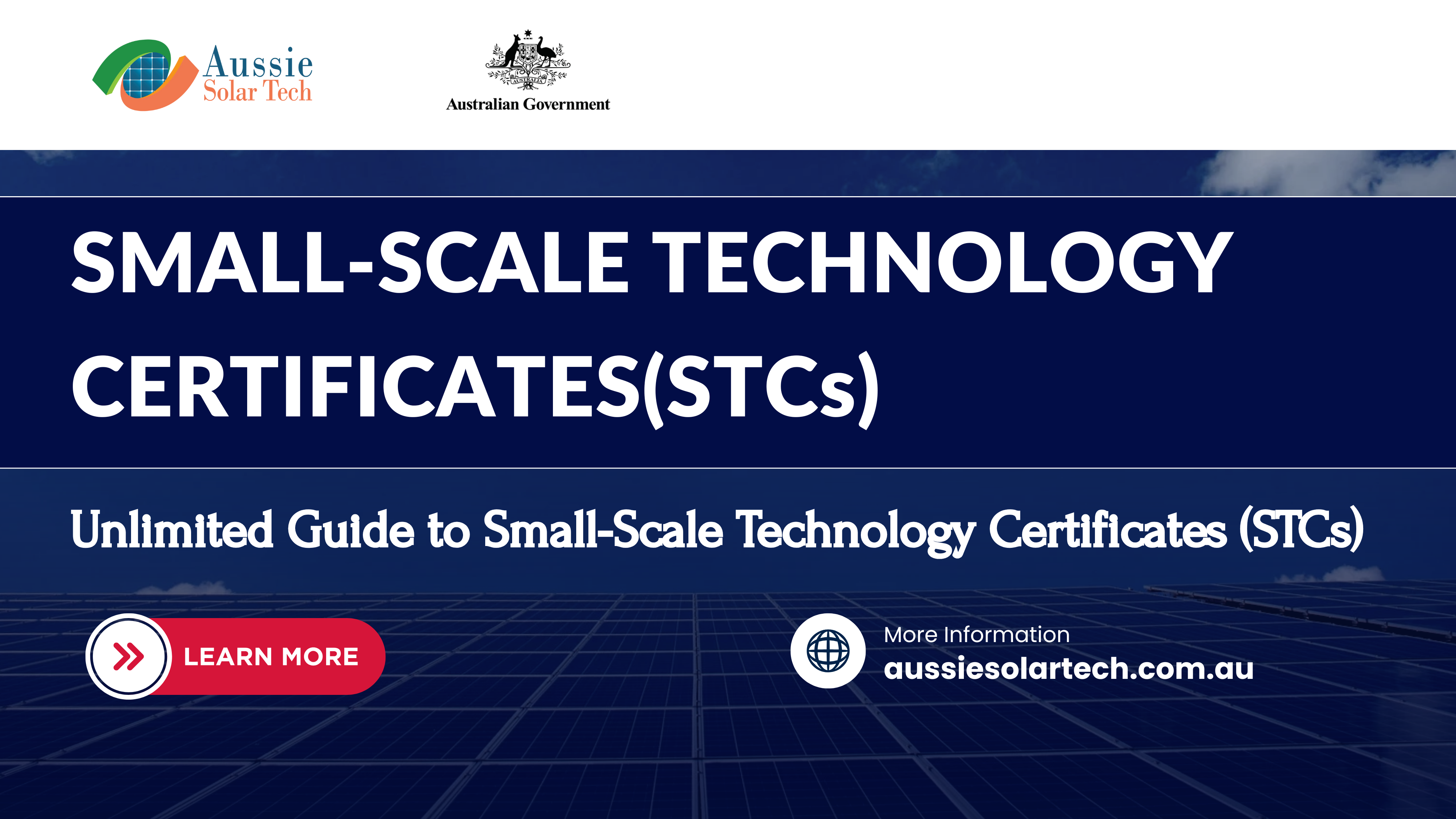
In This Article
ToggleSmall-scale technology certificates or STCs are a key component of Australian Federal Government renewable energy incentives, designed to reduce the upfront cost of solar installations and to encourage the use of renewable energy. Individuals or businesses can earn STCs when they install eligible small-scale renewable energy systems.
Small-scale systems in Australia are known as small renewable energy systems, like rooftop solar panels, solar water heaters, small wind turbines and air source heat pumps that are installed by households and small businesses are able to receive a benefit towards the purchase cost. Installing an eligible system allows the creation of small-scale technology certificates (STCs) with a value that can be redeemed by selling or assigning them.
Upgrading an eligible small-scale system like rooftop solar system in your house or business allows the creation of small-scale technology certificates (STCs) with a STC rebate amount. Your solar retailers or solar installers will normally apply for the creation of STCs on Clean Energy Regulator and sell them on your behalf to STC traders or directly on Clean Energy Regulator Registry after registration with valid CEC accreditation.
What Are The Types Of Small-scale Renewable Energy System
There are 5 types of small-scale renewable energy systems eligible under the SRES scheme. Classification of a small-scale system is based on the system’s capacity or how much energy the system displaces.
- Solar Photovoltaic (PV)
- Wind Turbines
- Hydro Systems
- Solar Water Heaters
- Air Source Heat Pump
Small-scale Renewable Energy System Eligibility Requirements
Systems with higher capacity than small scale limit that will be classified as power stations. Power stations can be accredited under the Large-scale Renewable Energy Target and may be eligible for large-scale generation certificates.
- Solar Photovoltaic (PV): System capacity: no more than 100 kW. Annual electricity output: less than 250 MWh.
- Wind Turbines: System capacity: no more than 10 kW. Annual electricity output: less than 25 MWh.
- Hydro Systems: System capacity: no more than 6.4 kW. Annual electricity output: less than 25 MWh.
- Solar Water Heaters: System capacity: up to 700 L. Models with a capacity over 700 L need further documentation to be eligible for STCs.
- Air Source Heat Pump: System capacity: no more than 425 L.
What Are Small-scale Technology Certificates (STCs) ?
STCs are tradable certificates created under the Federal Government’s Small-scale Renewable Energy Scheme (SRES), Small-scale Renewable Energy Scheme is the Australian Federal Government initiative that encourages investment in small-scale renewable energy and administered by Clean Energy Regulator, Australia. Each certificate represents a specific amount of renewable energy generated or expected to be generated by your solar system over its lifetime. Essentially, they serve as a financial incentive to help offset the cost of installing eligible renewable energy systems.
STCs are used as a way to meet Australia’s renewable energy targets and reduce emissions. These certificates make renewable energy systems more accessible and attractive as STCs with a value that is the STC rebate value can be redeemed by selling or assigning them to slash the eligible system installation cost. When you install an eligible renewable energy system, you earn a certain number of STCs.
An STC is equal to 1 megawatt hour (MWh) of renewable electricity generated or displaced by small-scale renewable systems.
In the context of renewable energy, “displaced” refers to fossil fuels or other traditional energy sources being replaced or reduced in use by renewable energy sources like solar, wind, or hydro power.
- Creation of STCs: When you install a solar photovoltaic (PV) system, you’re awarded a number of STCs based on the solar panel system’s capacity, location, and expected energy output over its deemed lifespan.
- Tradable Asset: These certificates can be sold to energy retailers or other liable entities, effectively reducing the net installation cost.
- Declining Factor: The number of STCs awarded decreases over time as the scheme is gradually phased out, so earlier installations can benefit from higher STC multipliers.
Who Can Participate in Small-scale Renewable Energy Scheme (SRES)
The Federal Government scheme is designed for all homeowners and businesses who want to reduce their electricity uses by upgrading renewable energy systems. It’s aimed to Australian people who want to use their own system’s generated energy or share generated energy from the grid via batteries. To participate, individuals and small businesses must choose and install an eligible small-scale renewable energy system.
Small-scale Technology Certificates Creation
Creating and selling small-scale technology certificates (STC) is a complicated process. For this, most people assign the CEC certified system installer to create STCs to a registered agent in exchange for an upfront discount on the system’s purchase price. STCs certificates must be created within 12 months of the installation date.
Before you create STCs
- Check the system is eligible
- Confirm you’re the system owner or have the right to create certificates for the system
- Ensure you have the correct REC Registry account type
- Check your sales contract to ensure STCs haven’t already been created for the system
- Ensure you have all the required documents and evidence
- Ensure documents are signed by the relevant parties, including the installer, designer, retailer and owner (if required)
- Select the deeming period and calculate certificate entitlements
Creating STCs using the REC Registry
- Certificates must be created in the REC Registry within 12 months of the installation date.
- If you’re the system owner, you must create a ‘registered person’ account in REC Registry. As Clean Energy Regulator must conduct verification checks, this process could take 6 weeks or longer. Please ensure you allow time to complete this process as we cannot offer any exemptions.
- If your system is within 8 weeks of the 12-month deadline, Then contact a registered agent to register and claim STCs on your behalf to avoid missing out.
- If you’re an agent claiming on behalf of others, you must have a ‘registered agent’ account. You must also have the STCs assigned to you before creating in the Rec Registry.
Required documents Use Clean Energy Regulator guidelines to ensure you have all required documents before creating STCs.
- Guidelines for Small generation units (solar PV, wind and hydro systems)
- Guidelines for Solar water heaters
To create STCs, you need to have certain documentation. The documents you need to provide depend on the system. All required documents must be completed and signed before creating STCs. You can upload the documents in the REC Registry when you submit your STC application. This will help reduce processing timeframes. Clean Energy Regulator guidelines recommends to provide the required documents for up to 5 years from the date of creation. You must provide the documents if requested, even if the claim is already approved.
Solar PV Systems
- Written compliance statement from designer and installer
- Written statement from solar retailer
- A certificate of electrical safety, WA also needs a Notice of Completion
- Photos showing the solar panel serial numbers on the product matches the listed numbers in the REC Registry
- Photos showing the inverter serial number on the product matches the listed number in the REC Registry
- Photos showing the installer met on-site attendance requirements
- Invoice (optional)
Wind and hydro systems
- Compulsory written statement from installer.
- A certificate of electrical safety, WA also need a Notice of Completion.
- Invoice (optional).
Wind and hydro systems
- A certificate of compliance (or equivalent) from the installer.
- An invoice from the installer or a date-stamped photo of the unit. For solar water heaters with a capacity greater than 700 L, you also need: a system owner statutory declaration and a system size statutory declaration to confirm system model, capacity and installation.
Solar PV System Eligibility Requirements for STCs
To be eligible for STCs, your solar PV system must be designed and installed by a Clean Energy Council-accredited solar installer. The solar panels and inverter must be on the lists of Clean Energy Council-approved modules and inverters.
The value of STCs you receive is based on the estimated amount of electricity your solar energy system will generate until 2030. This amount depends on:
- The size (kW) of your solar panel system (up to a maximum of 100 kW)
- The climate zone where the solar panel system is installed.
When you sign your contract with a solar panel retailer or accredited installer, you sign over ownership of the Small-Scale Technology Certificates (STCs) in return for the discount.
Australian renewable energy industry associations
Financial Impact of Small-Scale Technology Certificates (STCs)
Small-scale Technology Certificates (STCs) play a key role in reducing the overall cost of installing solar panel systems by providing a government-backed STC Rebates mechanism. In Canberra, this can mean a significant reduction in your upfront costs, making the transition to renewable energy more financially attractive over the life of the system.
- Cost Offset: By selling your STCs, you can significantly lower the net cost of your solar panel installation. Many solar installers in Canberra handle the application and trading of STCs as part of their service.
- Market-Driven Value: The price of STCs fluctuates based on market demand and regulatory changes. This means the financial benefit you gain can vary over time.
How Do Small-Scale Technology Certificates (STCs) Factors
The formula to calculate the number of Small-scale Technology Certificates (STCs) generated by a solar panel system is relatively straightforward. It involves considering the system’s size, location, solar zone rating, and installation date.
Calculation Factors
- System Size and Output: A larger system or one that produces more kilowatt-hours (kWh) per day will typically qualify for more STCs (Small-scale Technology Certificates).
- Location-Specific Multiplier: The number of STCs (Small-scale Technology Certificates) homeowners or business owners receive depends on Canberra’s solar resources. Locations with higher sun exposure generate more renewable energy, increasing the number of STCs earned. More sunlight means greater solar energy output and bigger savings on homeowners or business owners solar panel installation costs.
- Deemed Lifetime: STCs are calculated based on an assumed operational life of homeowners or business owners of solar systems (often around 15 years), during which the system’s energy generation is estimated.
Small-Scale Technology Certificates Calculation Formula
The formula to calculate the number of Small-scale Technology Certificates (STCs) generated by a solar panel system is relatively straightforward. It involves considering the system’s size, location, solar zone rating, and installation date.
The amount of STCs created from a solar panel system will be based on three factor values:
- The total power capacity of the solar panel system is measured in kilowatts (kW).
- The rating of the solar zone where the solar panels are installed.
- The number of years the solar panel system will be producing for, before the scheme is phased out in 2030.
The STCs calculation formula is bellow: Number of STCs = Postcode Zone Rating × Deeming Period Years × System Size in kW
STC Rebates Calculation Formula
The Value of STCs that is STC Rebates calculation formula is bellow: Amount Of STC Rebates = STCs × Price of each STC
Example Calculation For Finding STCs and STC Rebates: A 6.6kW solar panel system installed in Canberra (Zone 3) generates approximately 9.1 MWh per year. Considering the current deeming period (remaining years until 2030), this solar panel system would produce around = Postcode Zone Rating: 1.382 × Deeming Period Years: 6 × System Size in kW: 6.6 = 54 STCs.
Each STC price is now $40, So the total STC rebate would be: 54 STCs × $40 = $2,160 for 6.6kW system in Canberra.
The Table of Potential Solar Packages, Amount of STCs and The Value Of STC Rebate That You Could Take Advantage In the Different Solar Zones In Australia
Choosing a solar system based on your zone is crucial, as it directly impacts the rebate amount. STC’s (Small-scale Technology Certificates) Solar rebate for popular solar panel installation packaged in 2025 and Government Deeming Period 2030 .
| Solar Zone 1 (Most Sunlight)
Solar Zone factor of 1.622 |
|||
| System size | Amount of STC’s | STC Price | STC Incentive |
| 6.6 kW | 64 | $40 | $2,560 |
| 10.56 kW | 102 | $40 | $4,080 |
| 13.2 kW | 128 | $40 | $5,120 |
| 19.3 kW | 187 | $40 | $7,480 |
| Solar Zone 2 (Moderate)
Solar Zone factor of 1.536 |
|||
| System size | Amount of STC’s | STC Price | STC Incentive |
| 6.6 kW | 60 | $40 | $2,400 |
| 10.56 kW | 97 | $40 | $3,880 |
| 13.2 kW | 121 | $40 | $4,840 |
| 19.3 kW | 177 | $40 | $7,080 |
| Solar Zone 3 (Average Sunlight)
Solar Zone factor of 1.382 |
|||
| System size | Amount of STC’s | STC Price | STC Incentive |
| 6.6 kW | 54 | $40 | $2,160 |
| 10.56 kW | 87 | $40 | $3,480 |
| 13.2 kW | 109 | $40 | $4,360 |
| 19.3 kW | 160 | $40 | $6,400 |
| Solar Zone 4 (Least Sunlight)
Solar Zone factor of 1.185 |
|||
| System size | Amount of STC’s | STC Price | STC Incentive |
| 6.6 kW | 46 | $40 | $1,840 |
| 10.56 kW | 75 | $40 | $3,000 |
| 13.2 kW | 93 | $40 | $3,720 |
| 19.3 kW | 137 | $40 | $5,480 |
Benefits of Small-Scale Technology Certificates (STCs) for Homeowners in Australia
Australian homeowners who invest in solar panel systems with the help of Small-scale Technology Certificates (STCs) will benefit, including substantial cost savings, lower energy bills and contributing to a sustainable future.
- Excellent Solar Resource: Australia receives the highest average solar radiation per square meter of any continent, making it a prime location for solar energy production. Australia receives an average of 58 million petajoules (PJ) of solar radiation annually, which is about 10,000 times more than its total energy consumption. This results in a higher expected energy generation and consequently, more Small-scale Technology Certificates (STCs) compared to regions with less sunshine.
- Reduced Upfront Costs: Small-scale Technology Certificates (STCs) help lower the financial barrier to solar energy by reducing the upfront costs of solar panel installations. This incentive makes solar panels more adoption, making it more affordable and a sustainable future for homeowners.
- Increased Return on Investment (ROI): The savings on your electricity bills with additional revenue from trading Small-scale Technology Certificates (STCs), homeowners can achieve a payback period on his/her solar panel investment..
- Environmental Impact: Beyond the financial incentives, using renewable energy reduces your carbon footprint and supports Canberra’s move towards a 100% renewable energy future. Embracing renewable energy not only delivers financial savings but also plays a key role in reducing our carbon footprint. By opting for clean energy solutions, homeowners support Canberra’s ambitious journey toward a 100% renewable energy future, fostering sustainability, reducing greenhouse gas emissions, and creating a healthier environment for others.
- Cost Savings: The money you get from selling Small-scale Technology Certificates (STCs) directly reduces your upfront installation costs. In a place like Canberra, where your system can produce a robust amount of energy year-round, you’re likely to receive a good number of STCs.
- Government Support: The Australian Capital Territory (ACT), along with national policies, encourages renewable energy. Small-scale Technology Certificates (STCs) are one of the tools that make investing in solar power more affordable, aligning with Canberra’s goal of moving toward 100% renewable energy..
How Do Small-Scale Technology Certificates (STCs) Lower Your Solar Costs?
- Reducing Upfront Costs: When you install a solar system, you typically pay a higher initial amount. However, by earning Small-scale Technology Certificates (STCs) and selling them on the market, the funds you receive help to offset these costs.
- Improving Return on Investment (ROI): With lower initial costs and ongoing savings on your electricity bills, the time it takes for your solar system to “pay for itself” is shortened.
- Boosting Overall Value: The additional financial incentive makes solar installations more attractive, potentially increasing the value of your property and contributing to long-term energy savings.
Can You Claim STCs More Than Once?
Generally, homeowners or business owners can’t claim STCs (Small-scale Technology Certificates) more than once for the same solar system installation at the same home/business address. But one can claim STCs again if s/he installs a completely new solar system at a different home/business address or significantly upgrades an existing system by replacing both the panels and inverter, which can be considered a new small-scale renewable energy system installation.
What Should You Consider Before Relying on Small-Scale Technology Certificates (STCs)?
- System Size and Quality: The number of Small-scale Technology Certificates (STCs) you earn depends on your system’s size and efficiency. Larger, high-performing systems in Canberra will generate more certificates.
- Changes Over Time: The value of Small-scale Technology Certificates (STCs)is influenced by market demand and government policies. While they are a significant incentive today, their value can fluctuate.
- Professional Guidance: It’s highly recommended to work with experienced solar panel installers in Canberra. They can accurately assess your potential Small-scale Technology Certificates (STCs), help manage the paperwork, and ensure you get the best financial benefits from your installation
Getting Started with Small-Scale Technology Certificates (STCs)
- Consult a Solar Expert: Work with a reputable solar panel installer who is experienced with the Small-scale Technology Certificate (STC) system. They will assess your location, system size, and potential energy output.
- Understand Your Eligibility: Ensure your system qualifies under the Small-scale Renewable Energy Scheme (SRES). Your installer will help you navigate the eligibility criteria and the necessary documentation.
- Application Process: Your installer typically manages the paperwork, submits your application for Small-scale Technology Certificates (STCs), and arranges for the certificates to be traded.
- Monitor Market Trends: Since the value of Small-scale Technology Certificates (STCs) can change, staying informed about market trends can help you make the most of your investment.
In Summary
The amount of Small-scale Technology Certificates (STCs) for installing an eligible small-scale renewable system decreases every year as part of a planned phase-out of the scheme. The phase-out is scheduled to end in 2030. It is high time to boost your investment in Solar Systems. Small-Scale Technology Certificates (STCs) are a powerful tool for reducing the cost in Australia. By leveraging STCs, you not only cut down on initial expenses but also boost the overall return on your solar investment.
Small-Scale Technology Certificates (STCs) are a financial incentive designed to make solar energy more affordable by rewarding you for the extra renewable energy your system generates. In Canberra, where solar conditions are excellent, you’re likely to earn a healthy number of STCs, which can significantly lower the overall cost of installing solar panels.
By understanding and leveraging Small-Scale Technology Certificates (STCs), you can enjoy both environmental benefits and financial savings—making your move to renewable energy a smart, economically sound decision.

Shah Tarek is a Solar Energy Consultant with 10 years experience in solar system design and solar consultancy field at Australia. He is now a Director, Operation & Consultancy Division at Aussie Solar Tech, a leading Australian solar retailer and installer. Here he is writing informative and engaging solar content that educates the community on the benefits of solar power. His work supports Aussie Solar Tech’s mission to promote sustainable energy solutions and foster a greener future for Australia.



